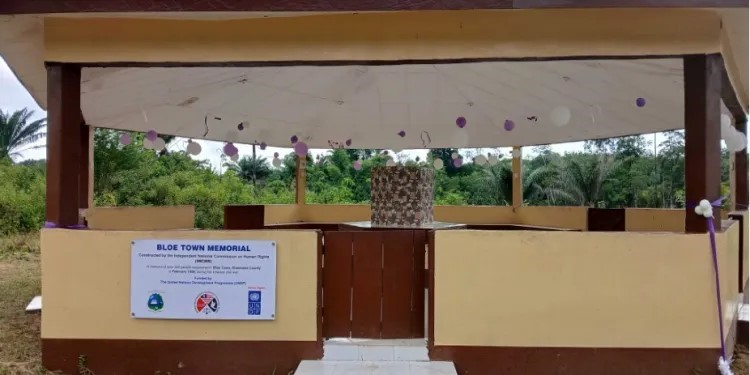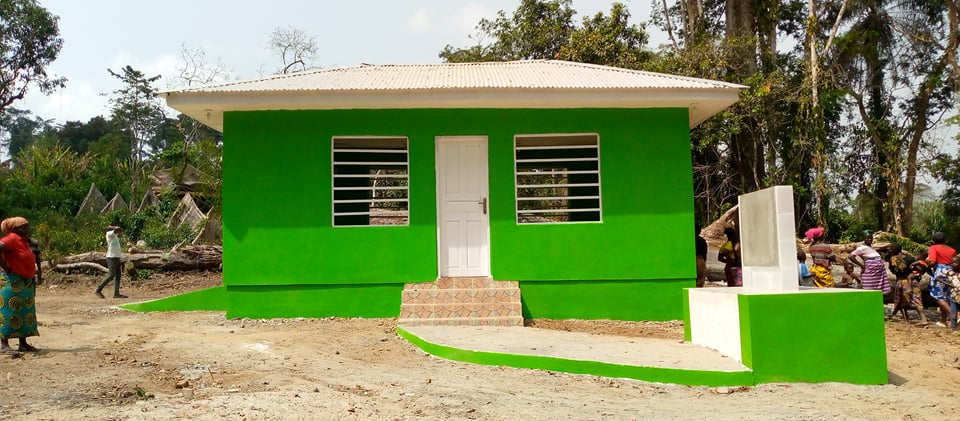By Jonathan O. Grigsby, Snr. Contributor Writers
Most often during my quiet time in the Paynesville suburb of Monrovia, I usually identify some important documents relating to Liberia, the country I love so dearly to have myself familiarized with some of the documents that are of interest not only to me but Liberians in general.
And the latest I positioned by hands on the past few days was the Truth Reconciliation Commission (TRC) Document. I read through the TRC Document but one of the portions that drawn my attention is Recommendation 17.0. This recommendation points to “Memorialization” and “Reparation”.
The TRC recommends: “That in order to memorialize the dead and out of respect for the survivors of the Liberian civil conflict, that be established a national holiday for that purpose to be observed once every year; preferably that National Unification Day be renamed National Unification and Memorial Day, and that memorial sites be built in the capital city of each county to include every site of where the remains of our people en masse have been buried.”
On Reparation, the TRC recommends: “Reparation Trust Fund for the resourcing to ensure that the reparation program is well managed and timely executed to satisfy the post-war objectives envisioned in the TRC Act and Policy on reparation.
For now, I will on another occasion elaborate on the issues that have to do with Reparation but let me take the first issue first, which had to do with Memorialization of the War Massacre Victims.
Since December 24, 1989 to the end of the Liberian Civil War in 2003, it is estimated the 250 thousand people lost their lives, leaving hundreds of them traumatized with both physical and emotional scars deeply rooted in their day to day living conditions.
In keeping with the TRC recommendation on Memorialization the Independent National Commission on Human Rights (INCHR), with support from the United Nations Development Program (UNDP) constructed nine memorials at massacre and mass grave sites across the country.
On Tuesday, 17 June 2025, official ceremony was held in Behn Town, Grand Bassa County to symbolic mark handing over of the memorials to local communities in the nine locations where the sites were constructed.
The essence of the sites is to promote healing, peacebuilding, and reconciliation to humanize and honor the victims, those who perished under traumatic conditions or were buried in improvised graves during the war.
It is also to foster community ownership and encourage use of the sites in ways to support the goals of the TRC’s Memorialization Program and to offer solace and healing to families of civil war victims as well as to provide a meaningful opportunity for communities to remember lost loved ones and seek closure.
These spaces serve not only as sites of remembrance but also as symbols of the nation’s collective rejection of violence as a means of resolving conflict.
And most important, the memorial sites are to promote local tourism, attracting visitors and bringing economic and cultural benefits to the surrounding areas.

It is on this line that I am centering my focus ideas, when it comes to the various Memorial Sites. My concerns are will the Sites be maintained by the local communities as it is mentioned in the TRC for promoting local tourism, attracting visitors and bringing economic and cultural benefits to the surrounding areas? Or will it be business as usually since it was through the support of the UNDP the nine Sites were built or it will or must be the UNDP to maintain them?
I am coming from the other side that sooner or later, those beautiful constructed Sites will be dumping sites, because cattle and grass will soon take over of them. The Sites will also be places where lovers, boy and girl friends will be meeting and the Sites will lose their essence. The Sites are sacred and special places that must be guided and protected from would-be intruders.
Those Sites are “Sacred” and I want them to be preserved and protected to the fullest to constantly honor war massacre victims that all Liberia will always deeply sole reflect that no more we as Liberians must not resort to violence in any form and war that will destroy the socio-economic fabric.
Now that the Sites have been constructed and dedicated in accordance with the TRC recommendations, are we considering the setting aside of a special day as national holiday each year in memorializing the war massacre victims or we will be waiting for another 18 plus years to select that day?
The TRC preferably said that National Unification Day be renamed National Unification and Memorial Day. Since national holidays are done through the legislature, there is a need that state actors need to act swiftly in putting the TRC’s Memorialization recommendation in motion.
Now on the Sites I do not know whether plans were put into place to ensure they are managed. If not I would like to put forward few suggestions:
- Let a small team to manage the Sites be organized, to ensure the grass are kept low, keep cattle from entering the Sites, prevent people from trespassing or entering Sites without permission from the team.
- Little fund must be paid by an individual or individuals visiting these Sites in getting some pieces of information or just visiting and wishing to take photos at these Sites because the Sites have become Tourism places.
- On the team at least individuals – people that know the actual happening and survivors of the massacre who will be able to adequately explain to visitors to the Sites, and
- Lastly, not to wait for partners to carry out renovation work on the building at the Sites because what are constructed at the nine locations, are for future generations and for years ahead.
These Sites are like other historical memorial sites around the world including the Rwanda Memorial Hall, so it is the sole responsibilities of all Liberian to jealously ensure that these Sites are always kept beautiful and good looking
When these few suggestions are considered, I am opting that the essence of the Memorial Sites will be realized and the funding provided by partners will not be wasted as in past years some partners funded projects in and around our country lay in ruins.
This is my fundamental hint on the TRC recommendation on Memorials.
Five of these memorials are in Grand Bassa, Rivercess, Lofa, Gbarpolu, and Bong counties. They are intended to humanize and honor the victims—those who perished under harrowing conditions or were buried in improvised graves during the war.

